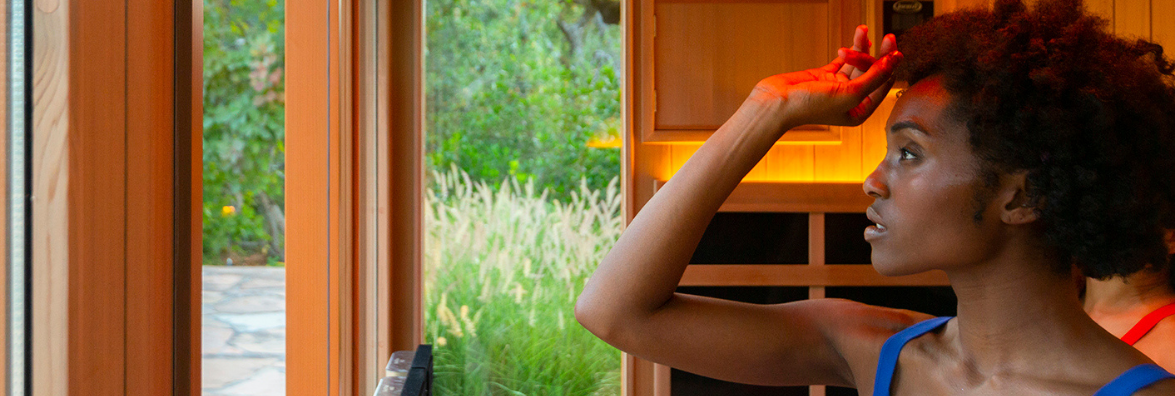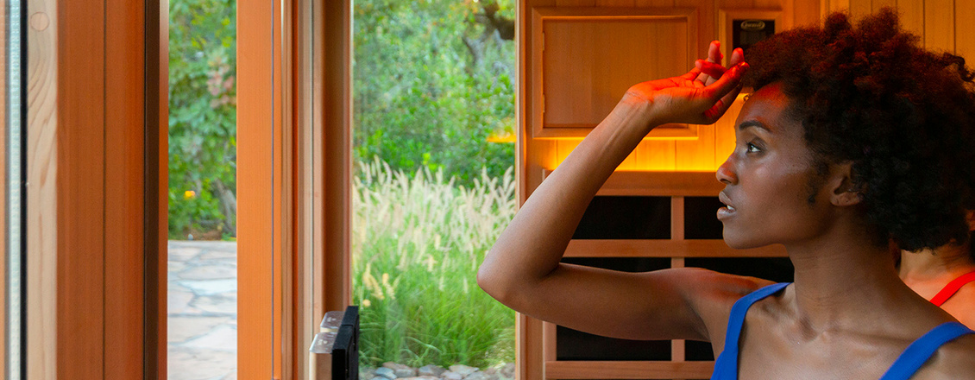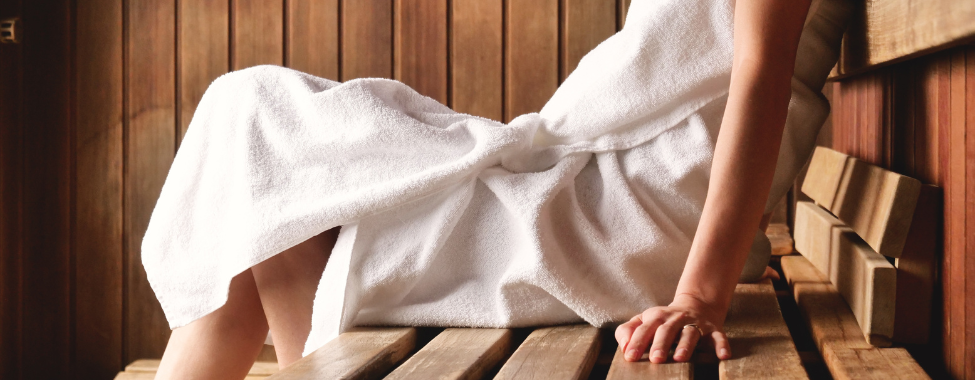As we have long days and hot weather, you might be thinking about how you can make the most of your summer health routine. If you’re looking for a way to stay healthy, refreshed, and energized during this season, look no further than pairing infrared saunas with swimming! As you may already know, both activities come with their own remarkable health benefits – but combined? They become an unbeatable duo, sure to give your body everything it needs this summer and beyond for some fun-in-the-sun with an incredible sweat session.
Whether you are looking to use an infrared sauna and swimming pool to tackle muscle soreness after swimming laps, maintain a healthy weight, or just relax and rewind during a long day on your feet – infrared saunas fit perfectly with pools for a number of health and wellness reasons. Read on to dive into how this experience can help make us feel refreshed and renewed this summer!

Health Benefits of Using an Infrared Sauna & Pool
There’s nothing quite like a good swim to help you relax after a long day, but what if you could take that relaxation to the next level? By adding an infrared sauna to the mix this summer, you can do just that. Combining the use of an infrared sauna with a refreshing dip in a pool provides an all-encompassing experience to promote not only physical relaxation, but mental and emotional wellness as well.
Not only does using an infrared sauna provide a number of impressive health benefits, such as reducing stress and boosting circulation, but pairing it with a swim in a pool offers a refreshing cool-down and can help ease sore muscles. Plus, the contrast in temperatures can be invigorating for the mind and body, providing a sense of rejuvenation and renewal.
The Health Benefits of Infrared Saunas
Infrared saunas are popular health and wellness tools due to their many mental and physical health benefits. Unlike traditional saunas, infrared saunas use infrared light to produce heat, which penetrates deeper into the body, resulting in a more intense sweat. This is excellent for helping flush out toxins, which can lead to a number of physical and mental health benefits.
Additionally, regular use of an infrared sauna can help aid weight loss, improve circulation, lower blood pressure, reduce visibility of cellulite, improve skin health, and ease muscle soreness. It’s also an effective method for reducing stress levels and boosting the immune system. So if you’re looking for a way to enhance your overall well-being, an infrared sauna may just be the perfect solution for you.
The Health Benefits of Swimming Pools
Swimming pools are not only a great way to cool off during the summer, but they can also offer numerous health benefits. Swimming is a low-impact exercise that provides a full-body workout, making it a great option for individuals with joint pain or injuries. In fact, a 30-minute swim can burn up to 300 calories, making it a great way to maintain a healthy weight.
Swimming also helps improve cardiovascular health by increasing heart rate and reducing blood pressure. Additionally, spending time in a swimming pool can improve mental health by reducing stress and promoting relaxation. So the next time you take a dip in your pool, remember that you are not just having fun, but also reaping some major health benefits.

Should You Use an Infrared Sauna or Swimming Pool First?
Using an Infrared Sauna Before the Pool
If you’re looking for a way to switch up your pre-swim routine, consider trying out an infrared sauna session before taking a dip in the pool. While it may seem counterintuitive, using an infrared sauna before taking a dip can actually help cool you down in the water. By raising your body temperature, you’ll then experience a more dramatic cooling effect when you jump into the refreshing pool.
If you’re looking to swim some laps, using an infrared sauna before the pool can actually help increase blood flow and improve circulation, which can make for a more efficient and effective workout. So if you’re up for a new way to optimize your pool time, have a quick sauna session before.
Swimming Before Using an Infrared Sauna
Swimming is a fantastic way to stay fit and keep our bodies healthy. However, after a rigorous workout, our muscles can become sore and fatigued. This is where an infrared sauna comes in handy. By sitting in an infrared sauna after swimming, the warmth of the sauna helps to relieve those tired muscles.
With its low-heat, deep-penetrating rays, the infrared sauna can help improve circulation and reduce inflammation in the body, which allows oxygen and nutrients to flow more freely to the muscles. This ultimately helps to speed up the recovery process, which means we can get back to swimming sooner. A post-swim session in an infrared sauna can be just what we need to feel relaxed and rejuvenated.

Infrared Sauna and Pool Safety Tips
Relaxing in a sauna or taking a dip in a pool can be a great way to unwind and pamper yourself after a long day. However, it’s important to keep safety in mind when indulging in these activities. One important tip is to make sure you stay hydrated. Sweating in a sauna or swimming in a pool can cause dehydration, so be sure to drink plenty of water before and after your session. Another useful safety tip is to wash off between the sauna and the pool. This helps prevent the buildup of bacteria and other germs, keeping you and other swimmers safe and healthy. By following these simple guidelines, you can ensure that your sauna and pool experiences are relaxing, refreshing, and above all, safe.
All in all, the combination of an infrared sauna and pool offers many health benefits ranging from improved circulation to increased relaxation. Not only that, there’s evidence that the two go hand-in-hand! Depending on your goals – weight loss, stress relief, or improved athletic performance – you may find that regular use of both an infrared sauna and pool could be beneficial. Ultimately, the choice is yours when it comes to picking your personal optimal workout schedule. You can start with a swim session before finishing with a sauna session, or do the opposite and begin your day in the heat then let the water cool you down afterwards. Whichever you choose, give yourself some time to relax and reap the pleasures of infrared saunas and pools!
 Canada
Canada Australia
Australia New Zealand
New Zealand Germany
Germany UK
UK EU
EU Ireland
Ireland Malaysia
Malaysia China
China Japan
Japan










































